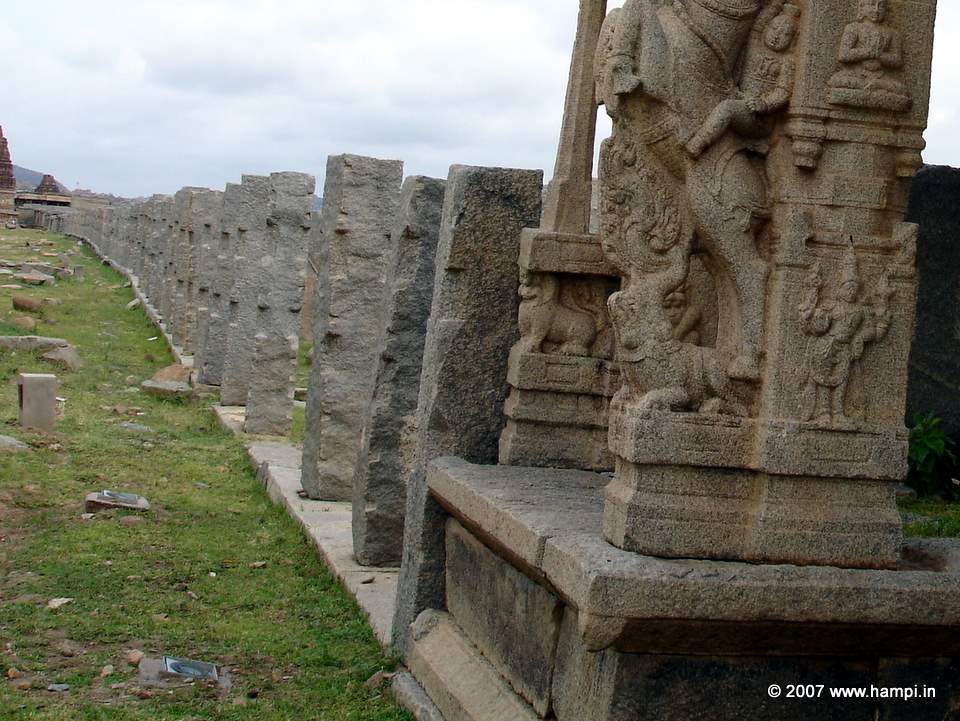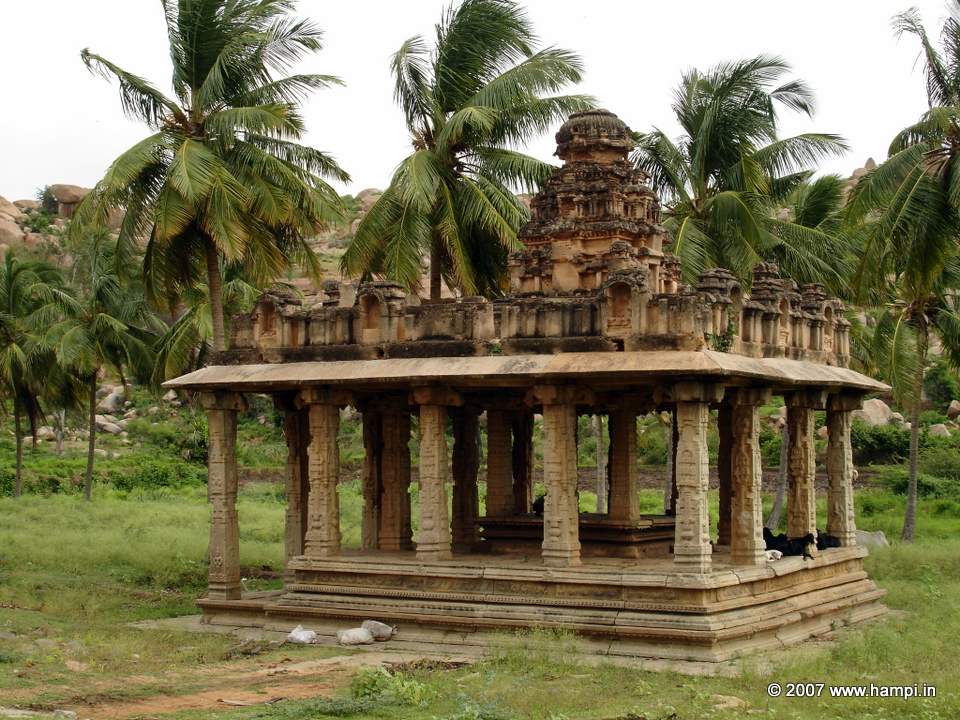Vittala Bazaar

T
his is one of the many ancient bazaars (market) in Hampi. As the name indicates, Vittala Bazaar is attached to the iconic Vittala Temple. This street is still intact and functional.You can even see the ruins of pavilions that was once part of the market and homes.
The bazaar is in a general east-west orientation parallel to the Thungabhadra River nearby. On either sides of the bazaar are chains of boulder hills. The river and the boulder hills make an interesting natural backdrop form the bazaar. At the west end of the Vittala Bazaar is the Vittala Temple; at the east is a pavilion called the Gejjala Mantapa. The motorable road is at the Gejjala Mantapa end. You'll be taking the Talarighatta ferry road from Kamalapura. The road goes through the Talarighata gate (a fort like archway) and a little ahead turn left to the mud road. You'll see a signboard directing for Vittala temple and Gejjala Mantapa. A little ahead you'll see the Gejjala Mantapa. You are now practically on the bazaar street. You'll go right through the Vittala Bazaar and the road ends at the Vittala Temple.
Another way to reach Vittala Bazaar (and Vittala Temple) is by a short trek along the riverside from the Hampi Bazaar end. This is a very popular trek path in Hampi.
The pavilions along the Vittala Bazaar are mostly in ruined state. Somewhere in the midway on the street yo can see an un finished temple called the Kudure Gombe Mantapa, with rows of pillars depicting rearing horses. Opposite to this across the street is a large temple tank with a pavilion at the center.
During the functional days of Vittala Temple all these - the temple tank, Kudure Gombe Mantapa and the Mantapa - were significant sites. During the annual festival the idol of the god and goddess used to be taken on a chariot on the bazaar street. The Gejjala mantapa served as a ceremonial place to keep the idol, before it is returned back to the temple.

Ruins of Vittala Bazaar
Ruins of Vittala Bazaar

Gejjala Mantapa
Gejjala Mantapa
